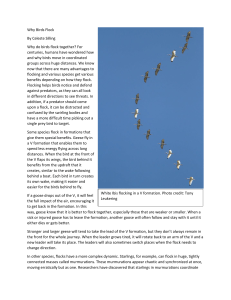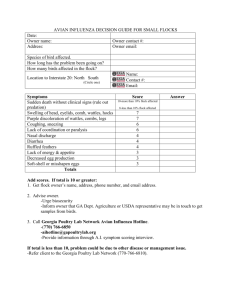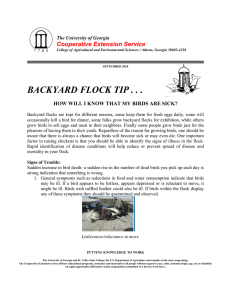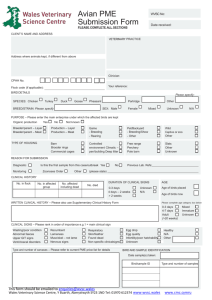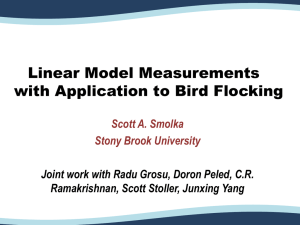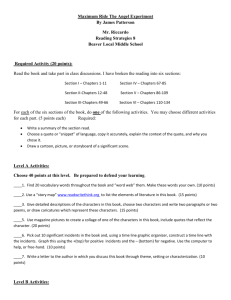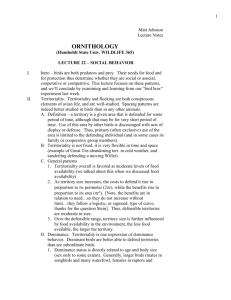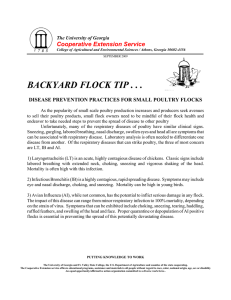Self Organization Handout
advertisement
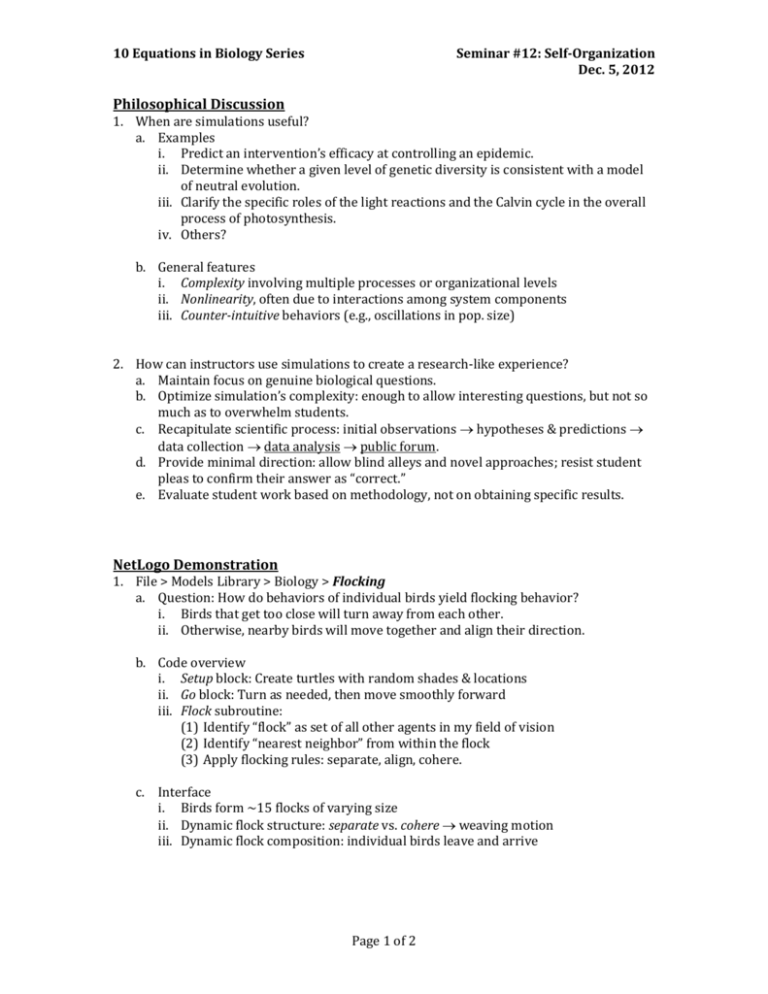
10 Equations in Biology Series Seminar #12: Self-Organization Dec. 5, 2012 Philosophical Discussion 1. When are simulations useful? a. Examples i. Predict an intervention’s efficacy at controlling an epidemic. ii. Determine whether a given level of genetic diversity is consistent with a model of neutral evolution. iii. Clarify the specific roles of the light reactions and the Calvin cycle in the overall process of photosynthesis. iv. Others? b. General features i. Complexity involving multiple processes or organizational levels ii. Nonlinearity, often due to interactions among system components iii. Counter-intuitive behaviors (e.g., oscillations in pop. size) 2. How can instructors use simulations to create a research-like experience? a. Maintain focus on genuine biological questions. b. Optimize simulation’s complexity: enough to allow interesting questions, but not so much as to overwhelm students. c. Recapitulate scientific process: initial observations hypotheses & predictions data collection data analysis public forum. d. Provide minimal direction: allow blind alleys and novel approaches; resist student pleas to confirm their answer as “correct.” e. Evaluate student work based on methodology, not on obtaining specific results. NetLogo Demonstration 1. File > Models Library > Biology > Flocking a. Question: How do behaviors of individual birds yield flocking behavior? i. Birds that get too close will turn away from each other. ii. Otherwise, nearby birds will move together and align their direction. b. Code overview i. Setup block: Create turtles with random shades & locations ii. Go block: Turn as needed, then move smoothly forward iii. Flock subroutine: (1) Identify “flock” as set of all other agents in my field of vision (2) Identify “nearest neighbor” from within the flock (3) Apply flocking rules: separate, align, cohere. c. Interface i. Birds form ~15 flocks of varying size ii. Dynamic flock structure: separate vs. cohere weaving motion iii. Dynamic flock composition: individual birds leave and arrive Page 1 of 2 10 Equations in Biology Series Seminar #12: Self-Organization Dec. 5, 2012 2. File > Models Library > Biology > Slime_WashU a. Question: How do individual Dicty cells aggregate? i. Each cell secretes a chemical onto its current patch. ii. Cells “sniff” ahead and move toward highest chemical concentration. iii. Patches diffuse and evaporate the chemical. b. Skip code overview c. Interface i. Like Flocking, form multiple dynamic colonies ii. In this model, colonies slowly disperse or merge, but NEVER fission. iii. Explore parameter space: (1) Two major states: discrete colonies vs. “soup” of vagrant cells. (2) Decrease sniff-angle from 180°. Narrower search cone looser cohesion. (3) Increase evap-rate from 10%. Smaller chemical corona weaker cohesion. (4) Diagram phase space on board, with a few sample points. iv. Model parametrization: Estimates from literature or own research 3. Take-home message: Complicated behaviors do not necessarily require complex rules! Notes and Suggestions from Seminar 1. Clarify that plant microtubules are being introduced only as an example of selforganization at the subcellular level. Perhaps display a hierarchy (ecosystem > population > organism > organ > tissue > cell > molecular) and list examples at several diff. levels. 2. Clearly differentiate between self-assembly and self-organization. 3. Preview NetLogo models on Day 1. 4. In NetLogo models, add a button to step forward a set number of time steps. May eventually look into ways to extract and compile data from entire class. 5. Focus investigation on posing testable/falsifiable hypotheses. Page 2 of 2
